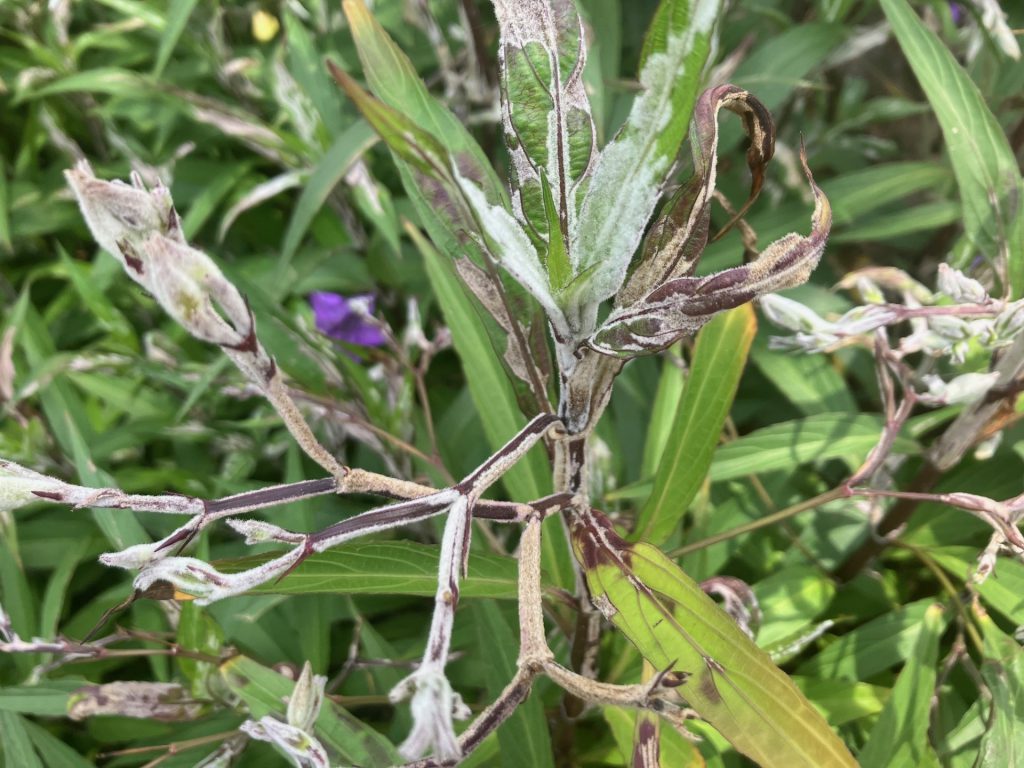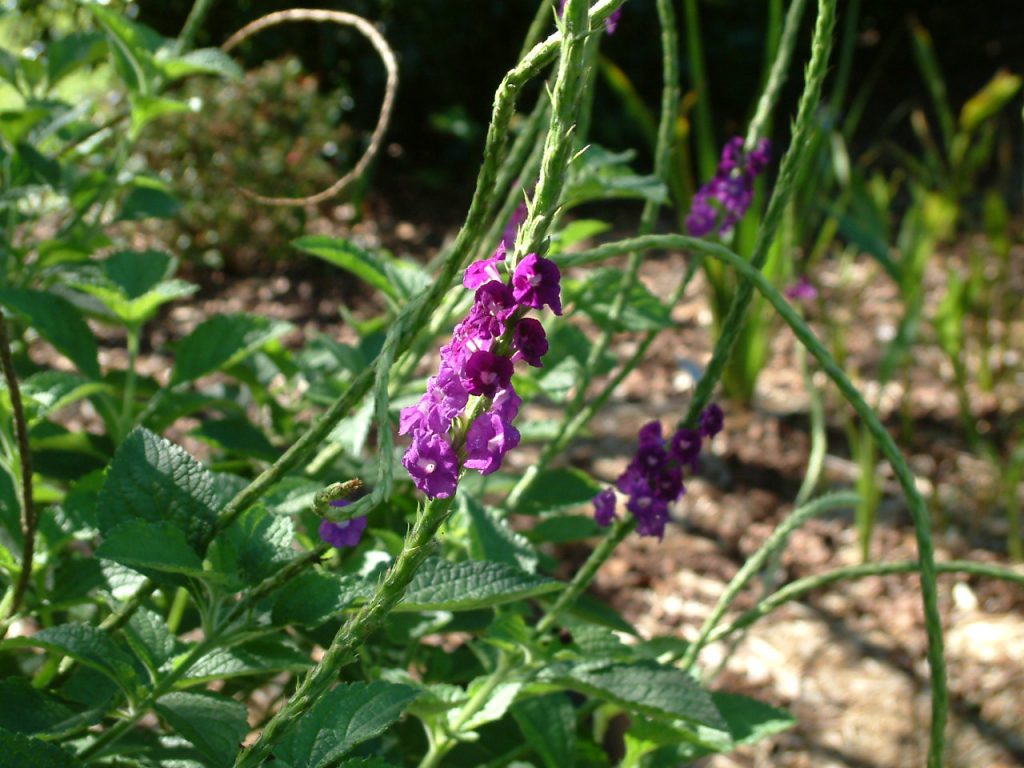Many of the Mexican petunia plants, Ruellia simplex, growing in the landscape along the Gulf Coast are covered in white patches. The leaves appear to be growing fur, actual hairs, much denser than the dust of powdery mildew fungus. Excessive development of leaf trichomes, or surface hairs is referred to as erinea. The “fuzz” is the plant’s response to the feeding of eriophyid mites, also called gall mites. These native tiny, microscopic mites feed on the Mexican petunia leaves and stems, causing the plant to produce the white velvety masses. The distorted tissue provides shelter so the mites can continue to feed without being impacted by the weather or contact pesticide applications. Hot, dry conditions favor mite population increases. We have had plenty of that. However, the native mites are not likely to kill the invasive Mexican petunia, so they are not acting as an effective biological control for the plant.

Control of this native eriophyid mite begins with heavy foliage removal. Cutting the plants back to just a few inches above the ground removes the infested portion of the plant. The pruned parts need to be placed in a tightly sealed plastic bag before being sent to the landfill. If the location allows burning on-site, that is an even better option. Remember that these mites can feed on many other plants if allowed to escape. They have caused galls in crape myrtle, loropetalum, and hollies, as well as, vectoring diseases like rose rosette.
Then comes the tough decision. If the Mexican petunia is not one of the new sterile cultivars should the new growth be protected as it grows back? If you didn’t plant them or don’t remember what they were called when you purchased them, there is still a way to determine whether they are the invasive Mexican petunia or not. Invasive Mexican petunia produces seed after flowering. Were there any seed pods on the pruned parts? If so, you may consider killing off the entire planting. Several applications of a total vegetation herbicide with surfactant will remove them, leaving you a spot for a new purple flower, maybe a porterweed (Stachytarpheta), verbena or blue salvia.

If your plants are sterile (have no seed pods), an application of horticultural oil and/or a miticide like abamectin sprayed with each flush of new growth will produce a pretty bed of purple flowers in a short period of time.
- Watch for “Melting Grass” - February 19, 2025
- Palms Can Suffer in the Cold - January 30, 2025
- Camellia Care - January 9, 2025
